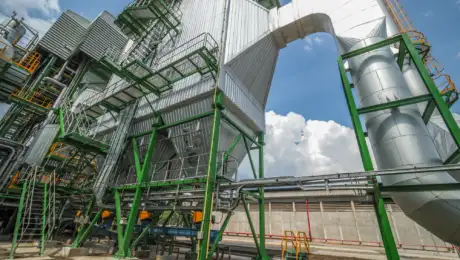
Safeguarding People, Assets, and the Environment from Fire and Explosions
ATEX (Atmosphères Explosibles) certification is the cornerstone of safety and contributes to the prevention of accidents, fires, and explosions within areas working with explosive atmospheres. It not only guarantees that equipment and protective systems meet stringent safety standards but also promotes a safe working environment. ATEX-certified products gain international recognition as symbols of quality and safety in potentially explosive settings.
Within the European Union, compliance with ATEX directives is not only considered as best practice but also mandatory. Nonconformity can not only lead to legal actions, fines, and penalties and have serious impacts on safety, operational disruption, and reputational damage.
Our mission is to leverage our impartial knowledge and extensive experience to ensure the safety of people, assets, and the environment in industries where explosive atmospheres pose a risk.
Leveraging over 40 years of experience in explosion safety
Powering Safety in Explosive Atmospheres - Where Precision Meets Compliance.
At Gexcon Certification, we harness the wealth of knowledge within Gexcon, collaborating closely with our dedicated team of consultants and researchers across various departments, including consulting, software, and testing.
Leveraging Gexcon's testing facilities, we can perform tests as part of the conformity assessment procedure, including large scale explosion testing. With our in-house software tool, FLACS, we are able to validate and consolidate insights related to the testing of explosion protection systems and equipment.
What are the ATEX Directives?
The EU-Directives safeguard workers from explosive atmospheres, ensuring safety at risk-prone workplaces.
The EU-Directives safeguard workers from explosive atmospheres, ensuring safety at risk-prone workplaces.
"ATEX" stands for "ATmosphères EXplosibles," which translates to "explosive atmospheres." There are two main directives, ATEX 2014/34/EU for equipment and ATEX 1999/92/EC for workplace safety.
Frequently asked questions
-
1What types of equipment can receive ATEX Certification?
In environments with explosive atmospheres, various types of equipment may need to be ATEX certified. The specific requirements can depend on the nature of the explosive atmosphere and the work being performed. Here are some common types of equipment that often require ATEX certification:
- Electrical Equipment:
- Motors
- Switches
- Lighting fixtures
- Control panels
- Sensors and detectors
- Communication devices
- Mechanical Equipment:
- Pumps
- Fans
- Conveyors
- Compressors
- Non-Electrical Equipment:
- Valves
- Gaskets
- Seals
- Protective Systems:
- Explosion-proof enclosures
- Flame arrestors
- Pressure relief devices
- Tools:
- Handheld or portable tools used in explosive atmospheres may need ATEX certification.
- Instrumentation:
- Analytical instruments
- Measurement devices
- Vehicles:
- Forklifts
- Vehicles used in potentially explosive atmospheres may require ATEX certification.
- Communication Devices:
- Two-way radios and other communication equipment used in explosive atmospheres may need ATEX certification.
- Electrical Equipment:
-
2Is ATEX Certification mandatory?
In certain industries, ATEX Certification is mandatory to comply with safety regulations. It depends on the nature of the work and the likelihood of explosive atmospheres
-
3How long does ATEX Certification last?
The duration of ATEX Certification varies. Manufacturers or certification bodies can provide information on the certification's validity period.
-
4What are the consequences of using non-ATEX certified equipment in explosive atmospheres?
Using non-ATEX certified equipment in explosive atmospheres can pose serious safety risks, leading to accidents, injuries, or fatalities. It may also result in legal consequences and regulatory non-compliance.
Our Solutions
-

Certification
ATEX Certification: EU-type examination
EU-Type Examination reviews a specimen of the envisaged product for evaluation and to determine that the “type” meets the essential requirements of Directive 2014/34/EU and issues an EU-type examination certificate.
-

Certification
Storage of technical file
Conformity assessment procedure for equipment category 2 non-electrical where the product and quality system assessment procedure is carried out by the manufacturer and technical documentation is communicated to notified body for storage purposes.
-

Certification
ATEX Certification: Unit verification
Unit verification assesses individual equipment, conducting tests per standards to ensure conformity with Directive 2014/34/EU, resulting in a conformity certificate.
-

Certification
UK Conformity Assessment
UKCA marking signifies compliance with GB legislation since January 2021, demonstrating product conformity for England, Scotland, and Wales
-

Certification
ATEX Training
Gexcon Certification offer ATEX training courses tailored to your needs. Our training instructors have extensive experience within the field of ATEX and explosion safety.
Related services
Learn more about our expertise in fire and explosion safety
-

Fire & Explosion Testing
Ignition Hazard Assessment for mechanical equipment and protective systems
An Ignition Hazard Assessment for mechanical equipment and protective systems is a critical safety evaluation process used in various industries to identify and mitigate the risks of igniting flammable atmospheres.
-

Fire & Explosion Testing
Testing of Passive Fire Protection
Testing for passive fire protection is essential for safety, legal compliance, property protection, and environmental preservation.
-

Fire & Explosion Testing
Explosion Mitigation System Testing
Prioritising explosion resistance is an investment in safety, quality, and the long-term sustainability of both businesses and the broader community.